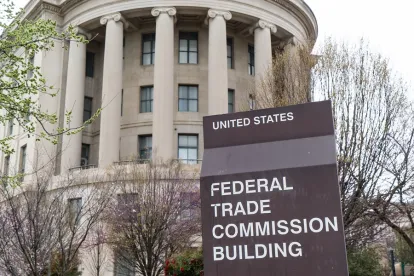The National Advertising Division (NAD) Annual Conference took place virtually this year from October 5 to 7 via Zoom. While perhaps not quite as fun as the usual in-person version in New York, the substantive legal content from the virtual rendition was excellent. In particular, discussions regarding recent NAD and Federal Trade Commission (FTC) cases highlighted the continued regulation of advertising issues involving influencers, social media and consumer reviews. The NAD recently addressed influencer marketing on the TikTok and Instagram social media platforms as part of its routine monitoring program in The Procter & Gamble Company (Bounty Paper Towels).1
In that case, the NAD raised concerns with Procter & Gamble’s influencer marketing videos for its Bounty paper towels. The TikTok videos featured influencers engaging in a “dance challenge” while a voiceover sang that it’s time to “clean up your life.” Bounty paper towels appeared in the background of the videos. All of the TikTok videos included the hashtag “#BountyPartner” to disclose the “material connection” between the influencer and Procter & Gamble (i.e., the paid influencer relationship). The NAD was concerned that the hashtag disclosures in the TikTok videos did not always appear when the videos were shared on other platforms like Instagram. As such, consumers who viewed the influencer videos on Instagram would not see the disclosures and thus may not understand the videos were actually paid advertisements. The NAD cited the FTC Influencer Disclosure Guide, which advises that endorsement disclosures made in videos should be embedded in the video and not simply in the description that is uploaded with the video.2
Procter & Gamble explained that it was not aware that the disclosures would not transfer to Instagram despite transferring to other platforms like Facebook, and it committed to ensure that the disclosures in TikTok videos going forward would be embedded in the video itself to transfer to all platforms. The NAD determined that Procter & Gamble’s efforts to ensure that such disclosures will be embedded in videos going forward were appropriate. This case illustrates how technical differences in how social media platforms operate can lead to advertising law issues when sharing content across platforms, even when the content was compliant as originally posted. The FTC addressed the legality of a company’s responses to negative consumer reviews on the Yelp platform in Mortgage Solutions FCS, Inc. 3 The FTC alleged that Mortgage Solutions FCS publically responded to consumers who posted negative reviews on Yelp by revealing the consumers’ credit histories, debt-to-income ratios, taxes, health, sources of income, family relationships, first and last names and other personal information in violation of the Fair Credit Reporting Act (FCRA) and other laws. For example, in response to one negative Yelp review, the owner of Mortgage Solutions FCS stated: “Your credit report shows 4 late payments from the Capital One account, 1 late from Comenity Bank which is Pier 1, another late from Credit First Bank, 3 late payments from an account named SanMateo. Not to mention the mortgage lates.
All of these late payments are having an enormous negative impact on your credit score.” The FTC warned that companies should not post credit reports and scores on the Internet to embarrass or punish consumers. To settle the case, Mortgage Solutions FCS and its owner will pay a $120,000 penalty for violating the FCRA, and the company is prohibited from misrepresenting its privacy and data security practices, misusing credit reports and improperly disclosing personal information to third parties.4 While brands may choose from a number of options for lawfully engaging with customers who post negative reviews on the Internet, shaming the customers based on their credit history or other protected personal information is not one of those options. As these cases illustrate, the usual advertising law principles continue to apply in the online marketplace, and the NAD and FTC have no problem wading into issues on new and emerging platforms. Wherever consumers go, and marketers chase, the NAD and FTC are sure to follow.
(1) NAD Case Report No. 6403 (Aug. 28, 2020).
(2) See https://www.ftc.gov/system/files/documents/plain-language/1001ainfluencer-guide-508_1.pdf.
(3) U.S. v. Mortgage Solutions FCS, Inc., Case No. 4:20-cv-00110 (N.D. Cal.)




 />i
/>i

